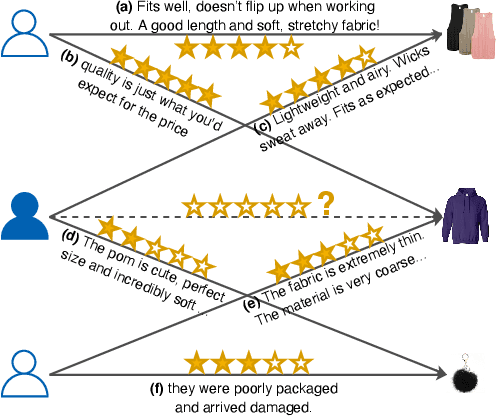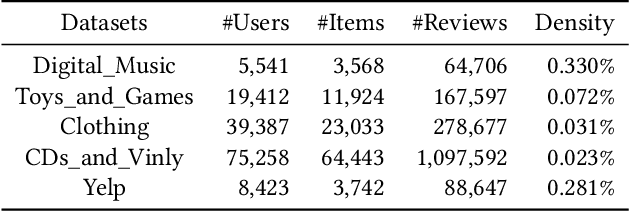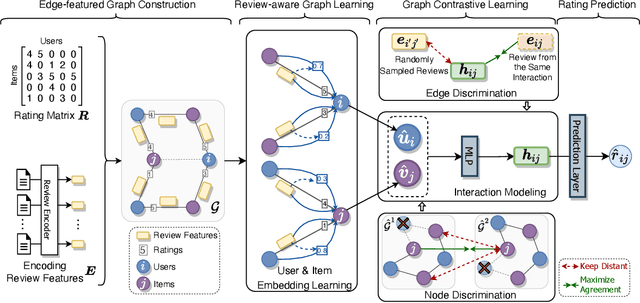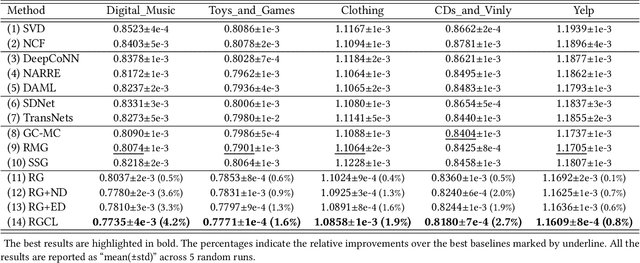A Review-aware Graph Contrastive Learning Framework for Recommendation
Paper and Code
May 04, 2022



Most modern recommender systems predict users preferences with two components: user and item embedding learning, followed by the user-item interaction modeling. By utilizing the auxiliary review information accompanied with user ratings, many of the existing review-based recommendation models enriched user/item embedding learning ability with historical reviews or better modeled user-item interactions with the help of available user-item target reviews. Though significant progress has been made, we argue that current solutions for review-based recommendation suffer from two drawbacks. First, as review-based recommendation can be naturally formed as a user-item bipartite graph with edge features from corresponding user-item reviews, how to better exploit this unique graph structure for recommendation? Second, while most current models suffer from limited user behaviors, can we exploit the unique self-supervised signals in the review-aware graph to guide two recommendation components better? To this end, in this paper, we propose a novel Review-aware Graph Contrastive Learning (RGCL) framework for review-based recommendation. Specifically, we first construct a review-aware user-item graph with feature-enhanced edges from reviews, where each edge feature is composed of both the user-item rating and the corresponding review semantics. This graph with feature-enhanced edges can help attentively learn each neighbor node weight for user and item representation learning. After that, we design two additional contrastive learning tasks (i.e., Node Discrimination and Edge Discrimination) to provide self-supervised signals for the two components in recommendation process. Finally, extensive experiments over five benchmark datasets demonstrate the superiority of our proposed RGCL compared to the state-of-the-art baselines.
 Add to Chrome
Add to Chrome Add to Firefox
Add to Firefox Add to Edge
Add to Edge